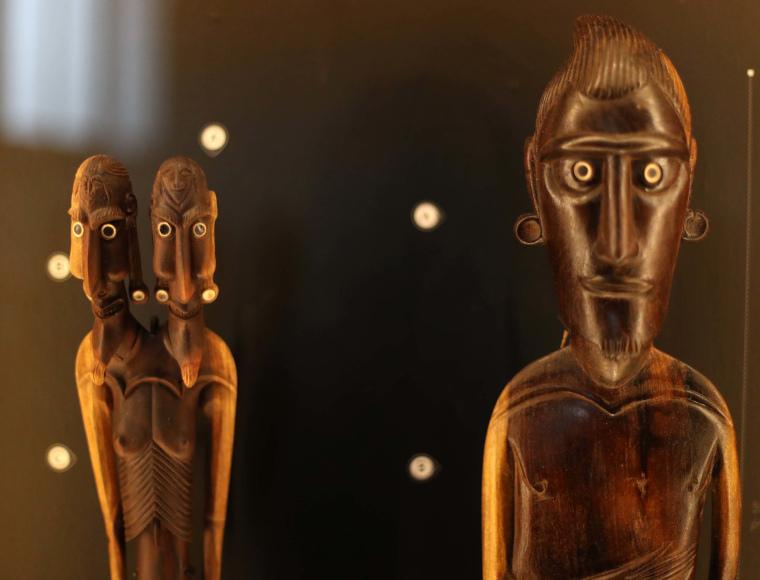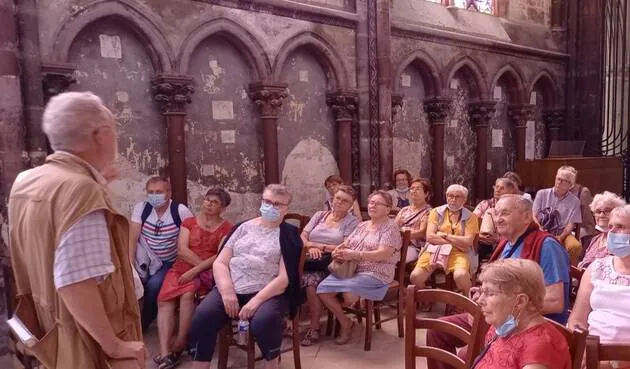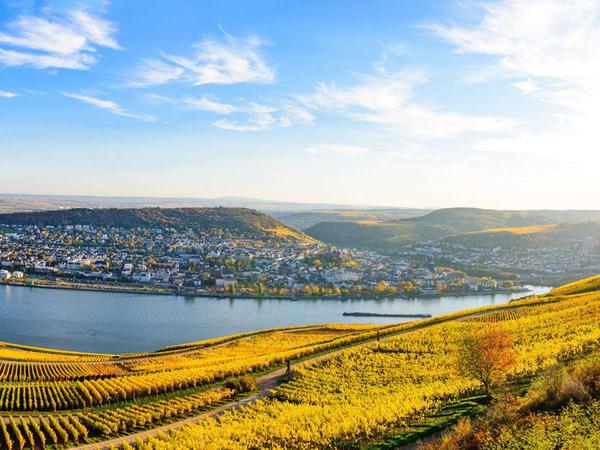Constance Harvey: Tapa'o tupuna or the new life of Rapanui crafts
The Ministry of Cultures, Arts and Heritage takes a decisive step to give continuity and a greater valuation to the traditional Rapa Nui crafts.This process has a visible face, which consists of an itinerant exhibition that will travel five cities in the country.But it also inCludes a stealthy work that is a concrete commitment to breathe from a new vitality to this practice, and in all its dimensions: as a trade in its relationship with ancestral techniques and the original materials, and as soon as each piece reflects a worldview and theMemory of an original town.
The exhibition is exhibited until November 10 at the National Museum of Natural History, in the fifth Normal, and is titled "Tapa’o Tupuna: Ancestral crafts Rapa Nui".You can visit from Tuesday to Friday, between 11:00 a.m. and 12:30 p.m., and from 2:00 p.m. to 3:30 p.m., and on Saturdays at 11:00, 12:00, 14:00 and 15:00hours, with free registration in MHNH.Gob.Cl.
It gathers 28 original pieces that were prepared by five artisan masters Rapanui and ten apprentices, in a knowledge transfer process.The teachers were Tomás Tuki Tepano (Seal of Excellence of Crafts of Chile), Isabel Pakarathi (Living Human Treasury), Luis Pate (1956-2020), Benedict Tuki, Jorge Tuki Pakarathi and Pablo Hereveri Teao.
The exhibition is part of the “Transfer, promotion and protection of traditional artisanal activity Rapa Nui”, which is executed by the Ministry of Cultures, Arts and Heritage, through the Seremi of the Cultures of Valparaíso, with FNDR financingof the Regional Government of Valparaíso, Insular gloss.
Its itinerance will continue in the Regional Museum of La Araucanía in Temuco (November 18 to December 15), the Museum of Natural History of Valparaíso (December 22 to January 16) and the Regional Library of La Serena in the city of Coquimbo(January 24 to February 18).Then it will be exhibited at the Rapa Nui Museum (April-May of 2022), a space that will host the pieces permanently, as they were acquired by the Ministry of Cultures for that purpose.
We talked about it with Constance Harvey, Seremi of the cultures of the Valparaíso region, who expresses his satisfaction for the return of the station to that region: "We feel very happy that Radio Beethoven is again here".
What is the motivation for this work that materializes, at this stage, in this itinerant exhibition?

"The first was the urgent need to transfer the artistic information of ancestral crafts Rapanui.We saw how this craft was in decline;The ancestral knowledge of the very ancient artisan teachers were being lost, in terms of doing and in terms of materiality, and was transforming into a sale of articles made massively.As we considered an intangible heritage, we wanted to go to the rescue of this situation, so we valued ancestral rapanui crafts through the transfer of artisan teachers to apprentices ".
The teachers who formed the apprentices are very connoted, and one of them died last year.I understand that this process is quite long, right?
"Of course, we started approximately three years ago because there are many stages. Primero, esta transferencia, que quiere decir que el maestro artesano le traspasa esta información a los aprendices en muchas Clases.It is not only about the crafts itself, but they are also given a lot of information about how this activity can become a way of life also for them.For that we also manage the seal of origin, that is, obtaining the certification brand before the National Institute of Industrial Property, Inapi, so that it can enter the seal program of origin and thus increase the competitiveness of this craft in front of othersproducts that are serial ".
Why does the seal of origin represents greater possibilities of living from artisanal activity?What does it imply?
"It implies that people who want to acquire a piece like these can identify the value they have in relation to others that have been made not with knowledge or techniques or original materiality.When a piece has the seal, it means that it is made with the wood that is associated with that craft from the ancestors, because it is also transferred with the knowledge of what each one means.They leave a mana, as they call it, a life that entails crafts, and that means transmitting this to the learning artisans.Each artisan teacher with whom we work, transferred this to three apprentices.At this time there are twenty people who have the possibility of certifying their pieces, which of course will have a value greater than a series made in series, because they will be original ".
how to treat an unconscious chaking adult or child http: // t.CO/KPSB47OQSE #MISCELNOUS #CPR #amp #Emercies
— MetaHowTo Fri Mar 22 20:52:52 +0000 2013
Does the seal of origin imply that a series of data is indicated in the piece itself, as the name of the artisan and town of origin?Is visibly materialized for citizens?
"Of course, it is visibly materialized, not only because they carry a special sticker, but they also have to manage this seal through the seremi.That is, the seal is not granted to anyone who asks for it, but has to fulfill an amount of physical knowledge to be able to acquire it, and that will be seen at the craft fairs, because it works with the municipality ofRapa Nui too;There are special designated premises to those who have that seal "
At what stage is the process of obtaining the seal of origin?
"The certification brand is practically ready, surely when we are in Temuco with the exhibition the seal is already going to be applied. El nombre de este sello, Tapa’o Tupuna, se lo pusieron los mismos maestros, y todo se hizo con ellos, inCluyendo el diseño gráfico, porque todo tiene un significado, todo es simbólico".
Los talleres personalizados abordaron todos los elementos Clave de este oficio, desde la enseñanza del tarai (tallado) en madera y piedra, la confección de trajes, joyas y accesorios en telas vegetales.In a complementary way to this transfer of knowledge, all artisans were trained in cultural management, entrepreneurship, sales and marketing, with talks in charge of institutions such as crafts from Chile and Inapi.
"These teachers are transferring not only a technique, but also the worldview of the Rapanui culture to the apprentices," says Constance Harvey.
In these 28 pieces that make up the exhibition, there are, for example, representations of ancestral figures such as Reimiro, the Moais Kavakava, Hoa Hakanani’a and Tangata;Artistic reproductions of petroglyphs and tablets rongo rongo, made in stones such as the vesicular basalt and woods such as the Mako’i.Totora wallets, pure necklaces, maust paint and banana fiber costumes are added, which are used in the tapati.
"With this exhibition people can learn much more from this tradition and the rapanui worldview.In this way, we feel that we value this crafts and, with the seal of origin, the possibility of being marketed in a much more fair way, "says the seremi of the cultures of the Valparaíso region.
This initiative to activate heritage memory, that is, work with cultural identity, do you think it is a seal of your management as Seremi?
"We, as Seremi, worked in diverse territories.Culture cannot be approved, and this means that the seremis have to implement stamps with regional identity.The Valparaíso region, has a very marked identity from Aconcagualso social protection for citizenship, having this type of value. Y Rapa Nui Claramente la tiene, y la tiene no solamente en su música y en sus bailes, sino que también en su lengua, que está en el estado de latencia en este momento.Then the seremis have to, in some way, be responsible for being able to transmit, transfer and value for example the rapanui language and ancestral craftOf the original peoples that we work in the Valparaíso region ".
By Romina de la Sotta |02-11-2021.



